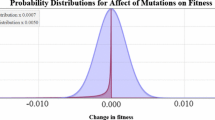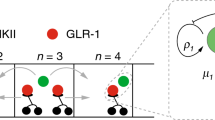Abstract
In most models of population dynamics, increases in population due to birth are assumed to be time-independent, but many species reproduce only during a single period of the year. A single species stage-structured model with density-dependent maturation rate and birth pulse is formulated. Using the discrete dynamical system determined by its Poincaré map, we report a detailed study of the various dynamics, including (a) existence and stability of nonnegative equilibria, (b) nonunique dynamics, meaning that several attractors coexist, (c) basins of attraction (defined as the set of the initial conditions leading to a certain type of attractor), (d) supertransients, and (e) chaotic attractors. The occurrence of these complex dynamic behaviour is related to the fact that minor changes in parameter or initial values can strikingly change the dynamic behaviours of system. Further, it is shown that periodic birth pulse, in effect, provides a natural period or cyclicity that allows multiple oscillatory solutions in the continuous dynamical systems.
Similar content being viewed by others
References
Abramowitz, M. and I. Stegun (1965). Handbook of Mathematical Functions With Formals, Graphs, and Mathematical Tables, New York: Dover Publications Inc.
Aiello, W. G. and H. I. Freedman (1990). A time delay model of single-species growth with stage structure. Math. Biosci. 101, 139–153.
Bergh, O. and W. M. Getz (1988). Stability of discrete age-structured and aggregated delay-difference population models. J. Math. Biol. 26, 551–581.
Bernard, O. and J. L. Gouzé (1995). Transient behavior of biological loop models, with application to the droop model. Math. Biosci. 127, 19–43.
Bernard, O. and S. Souissi (1998). Qualitative behavior of stage-structure populations: application to structure validation. J. Math. Biol. 37, 291–308.
Caswell, H. (1989). Matrix Population Models, Construction, Analysis and Interpretation, Sunderland, MA: Sinauer Associates.
Cushing, J. M. (1987). Equilibria and oscillations in age-structured population growth models, in Mathematical Modelling of Environmental and Ecological System, J. B. Shukla, T. G. Hallam and V. Capasso (Eds), New York: Elsevier, pp. 153–175.
Cushing, J. M. (1998). An introduction to structured population dynamics. CBMS-NSF Reg. Conf. Ser. Appl. Math. 71, 1–10.
Ebenman, B. and L. Persson (1988). Size-structured Populations: Ecology and Evolution, Berlin: Springer.
Gavrilefts, S. and A. Hastings (1995). Intermittency and transient chaos from simple frequency-dependent selection. Proc. R. Soc. Lond. B 261, 233–238.
Gazis, D. C., E. W. Montroll and J. E. Ryniker (1973). Age-specific, deterministic model of predator-prey populations: application to isle royale. IBM J. Res. Dev. 17, 47–59.
Grebogy, C., E. Ott and J. A. Yorke (1983). Crisis, sudden changes in chaotic attractors, and chaotic transients. Physica D 7, 181–200.
Gurney, W. S. C., R. M. Nisbet and J. L. Lawton (1983). The systematic formulation of tractable single-species population models incorporating age-structure. J. Anim. Ecol. 52, 479–495.
Gurtin, M. E. and R. C. MacCamy (1974). Nonlinear age-dependent population dynamics. Arch. Rat. Mech. Anal. 54, 281–295.
Hastings, A. (1983). Age-dependent predation is not a simple process, I, continuous time models. Theor. Popul. Biol. 23, 347–362.
Hastings, A. (1984). Delay in recruitment at different trophic levels: effects on stability. J. Math. Biol. 21, 35–44.
Hastings, A. and K. Higgins (1994). Persistence of transients in spatially structured ecological models. Science 263, 1133–1137.
Henson, S. M. et al. (1999). Multiple attractors, saddles, and population dynamics in periodic habitats. Bull. Math. Biol. 61, 1121–1149.
Higgins, K., A. Hastings and L. Botsford (1997). Density dependence and age structure: nonlinear dynamics and population behavior. Am. Nat. 149, 247–269.
Jury, E. I. (1974). Inners and Stability of Dynamic Systems, New York: Wiley.
Kostora, T., J. Li and M. Friedman (1999). Two models for competition between age classes. Math. Biosci. 157, 65–89.
Levin, S. A. (1981). Age-structure and stability in multiple-age spawning populations, in Lecture Notes in Biomathematics 40, T. L. Vincent and J. M. Skowrinski (Eds), Berlin, Heidelberg and New York: Springer, pp. 21–45.
Levin, S. A. and C. P. Goodyear (1980). Analysis of an age-structured fishery model. J. Math. Biol. 9, 245–274.
May, R. M. (1977). Thresholds and breakpoints in ecosystems with a multiplicity of states. Nature 269, 471–477.
Metz, J. A. J. and O. Diekmann (1986). The Dynamics of Physiologically Structured Populations, Lecture Notes in Biomathematics 68, Berlin, Heidelberg, New York: Springer.
Nicholson, N. J. (1954). An outline of the dynamics of animal populations. Aust. J. Zool. 2, 9–65.
Nicholson, A. J. (1957). The self adjustment of populations to change. Cold Spring Harb. Symp. Quant. Biol. 22, 153–173.
Petraitis, P. S. and R. E. Latham (1999). The importance of scale in testing the origins of alternative community states. Ecology 80, 429–442.
Tang, S. Y. and L. S. Chen (2002). Density-dependent birth rate, birth pulses and their population dynamic consequences. J. Math. Biol. 64, 169–184.
Van Den Bosch, F. and W. Gabriel (1997). Cannibalism in age-structured populations. Theor. Popul. Biol. 59, 551–573.
Weeb, G. F. (1985). Theory of Age Dependent Population Dynamics, New York: Marcel Dekker.
Author information
Authors and Affiliations
Corresponding author
Rights and permissions
About this article
Cite this article
Tang, S., Chen, L. Multiple attractors in stage-structured population models with birth pulses. Bull. Math. Biol. 65, 479–495 (2003). https://doi.org/10.1016/S0092-8240(03)00005-3
Received:
Accepted:
Issue Date:
DOI: https://doi.org/10.1016/S0092-8240(03)00005-3




